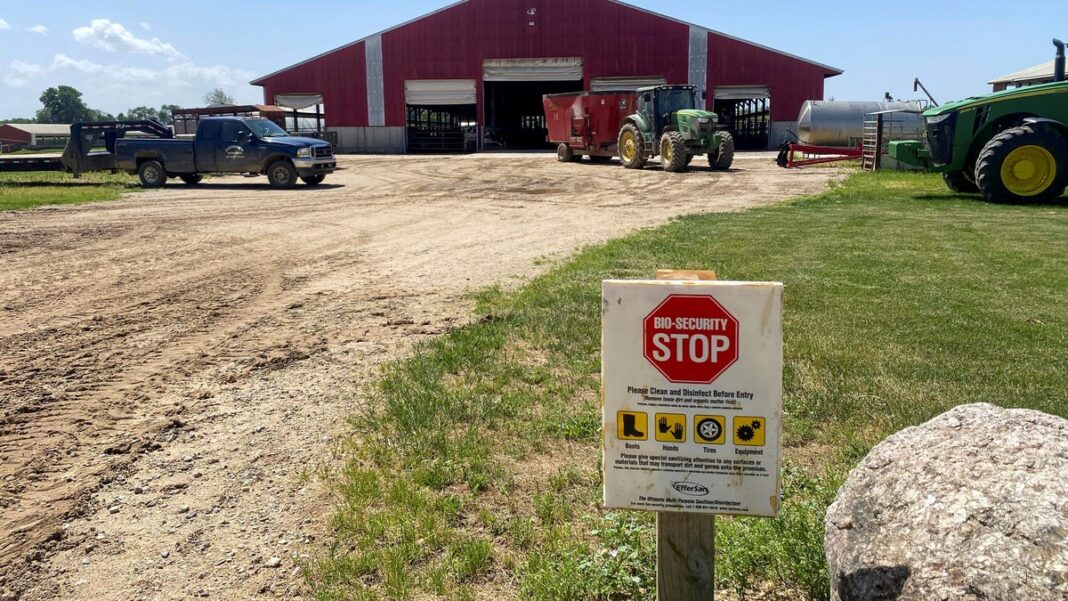The U.S. to Increase Emergency Bird Flu Vaccine Stockpile as Infections Rise
U.S. federal authorities are set to enhance the emergency stockpile of bird flu vaccines as more cases are reported among individuals.
On Friday, officials revealed that three manufacturers will receive $72 million aimed at boosting pandemic readiness, which includes tackling avian flu.
According to David Boucher, who oversees infectious disease preparedness at the Administration for Strategic Preparedness and Response within the U.S. Department of Health and Human Services, this funding will help expand the vaccine stockpile to 10 million doses by next spring. This summer, the U.S. prepared the first 4.8 million doses, but they have not yet been deployed.
This year, authorities have recorded 16 cases of H5N1 avian influenza in humans, all exhibiting mild symptoms, with no evidence of the virus spreading from person to person. Public health officials would reassess the need for vaccination if human-to-human transmission were to occur. The Centers for Disease Control and Prevention has reiterated that the overall risk to the public remains low despite these incidents.
The newly allocated $72 million will go to CSL Seqirus, which provided the initial batch of doses, as well as to Sanofi and GSK. These companies will be responsible for converting bulk vaccine supplies into ready-to-use vials or pre-filled syringes to ensure they are prepared for potential distribution. They will also produce vaccine components for current circulating strains, and Sanofi will maintain an adequate supply of eggs for future egg-based vaccine production.
Increasing Infections in Herds Lead to More Dairy Workers Affected
This funding comes after two new cases of bird flu were reported among dairy workers in California on Thursday. Numerous dairy herds in the state have been affected since authorities discovered the virus among cattle in August, with 56 herds reported as infected as of Thursday.
The two workers, from separate Central Valley farms, had direct contact with infected animals and both presented with red eyes, a prevalent symptom seen in this year’s cases. Out of the 16 reported cases, six involved dairy workers, while nine were in poultry workers from Colorado.
“As more herds test positive, the risk of exposure for workers increases,” said Dr. Nirav Shah, deputy director at the CDC. “With more exposure, the risk of human infection naturally rises.”
A recent case in Missouri involved an individual whose source of infection is currently unknown. The CDC is analyzing blood samples from nearby individuals, including healthcare workers and others living in the same household. Results are pending.
In the meantime, the CDC is providing seasonal flu vaccines to farm workers, which do not guard against bird flu, to help lessen the incidence of seasonal flu in this higher-risk group. Officials are concerned that a simultaneous infection of seasonal flu and bird flu could lead to mutations that might make the bird flu more transmissible or severe.
Testing and Quarantining Measures for Bird Flu
Dr. Eric Deeble, a senior official at the U.S. Department of Agriculture, mentioned that California has quarantined affected dairy farms and established a 10-km testing zone around these places to check milk for the H5N1 virus.
Bulk milk sampling has become a key method for detecting the virus in herds, according to Deeble, who noted that similar measures helped curb spread in Colorado farms.
After initial infections were noted in Colorado, officials identified a significant number of cases throughout the state. By implementing bulk milk testing, they successfully tracked and contained the spread, with only one infected herd now remaining out of 86 in that area.
This situation is particularly alarming for California, the leading milk producer in the U.S. Federal regulators have assured that pasteurization effectively kills the bird flu virus in dairy products.

